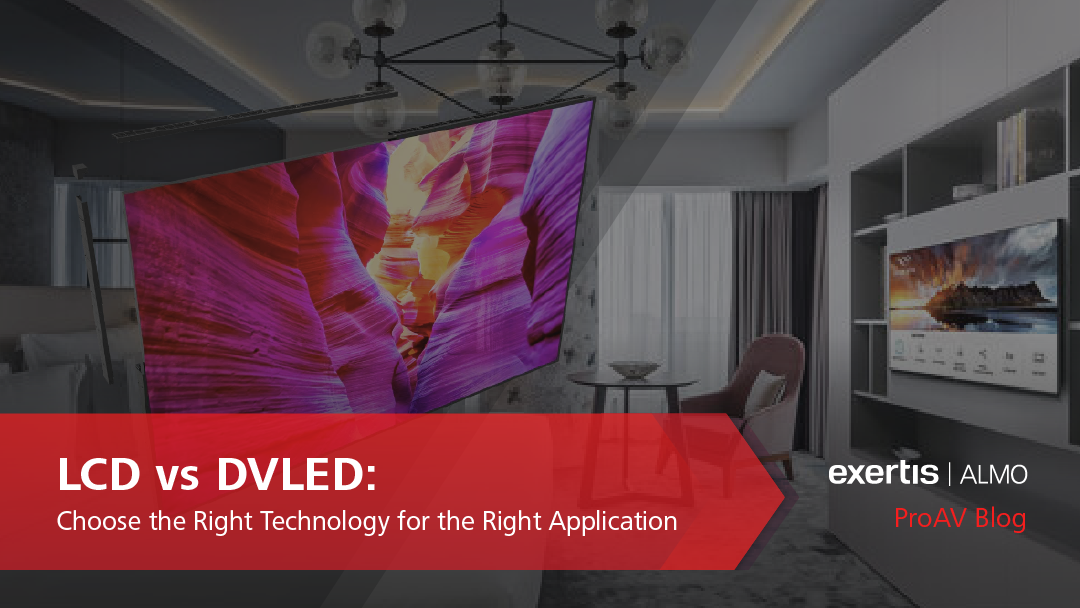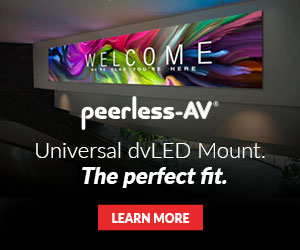In a world where Direct View LED (DVLED) is becoming the dominant technology for new video wall installations, does the multi-display LCD video wall still have a place?
Recently, I encountered several instances where clients were interested in DVLED walls but found that a multi-display LCD wall was a better fit for their application. One such case involved a sports bar, and I want to detail why we chose LCD over DVLED in this instance.



The sports bar client was initially interested in a 1.88mm pixel pitch 163” all-in-one DVLED display which can be a great choice to get a large, bright, full HD (1920 x 1080) display in a relatively compact and cost-effective form.  All-in-one DVLED displays are a great option as they do not require external LED controllers/sender units to operate since all the required components are built into the unit, so it functions like a standard monitor, and there are typically several predefined sizes to work in various environments. The other option for DVLED is a custom video wall solution. Custom DVLED walls are a good option when you have an application requiring a specific size display, atypical aspect ratio, or need specific resolutions or brightness levels. Custom DVLED allows the user the broadest choice in selecting products to meet the needs of their individual application, but generally requires a more complex installation using external LED controllers/sender units.
All-in-one DVLED displays are a great option as they do not require external LED controllers/sender units to operate since all the required components are built into the unit, so it functions like a standard monitor, and there are typically several predefined sizes to work in various environments. The other option for DVLED is a custom video wall solution. Custom DVLED walls are a good option when you have an application requiring a specific size display, atypical aspect ratio, or need specific resolutions or brightness levels. Custom DVLED allows the user the broadest choice in selecting products to meet the needs of their individual application, but generally requires a more complex installation using external LED controllers/sender units.
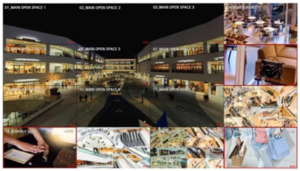 In this example, after talking with the client, it was determined that the better way to achieve their goals was to use LCD technology due to one primary factor, resolution. The client stated that they wanted to have multiple unique images on the display simultaneously, up to 9 different sporting events or advertisements on the wall at any given time. While it is possible to show the required number of images on the DVLED display using external video processing, the resolution of each image would end up being very low using the DVLED display discussed.
In this example, after talking with the client, it was determined that the better way to achieve their goals was to use LCD technology due to one primary factor, resolution. The client stated that they wanted to have multiple unique images on the display simultaneously, up to 9 different sporting events or advertisements on the wall at any given time. While it is possible to show the required number of images on the DVLED display using external video processing, the resolution of each image would end up being very low using the DVLED display discussed.
In the sports bar example, if we created 9 images on the 163” 1920 x 1080 resolution display, each image would be approximately 54.3” diagonal and have a resolution of 640 x 360 which is not ideal (see simulated images below). This leaves us two options to explore to get a higher resolution individual image on the display wall, either go with a custom DVLED solution with a finer pixel pitch or change to an LCD display array.
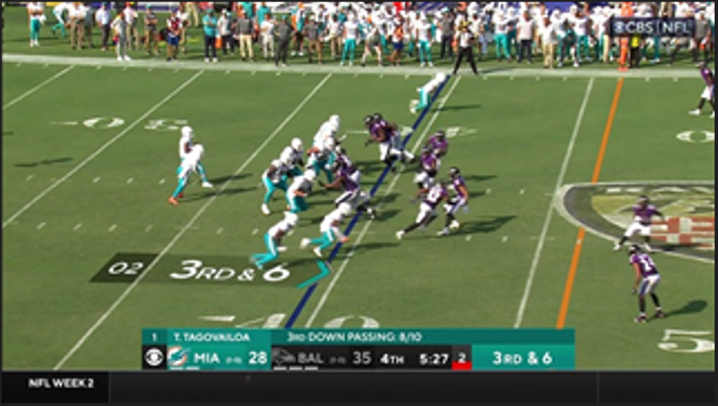
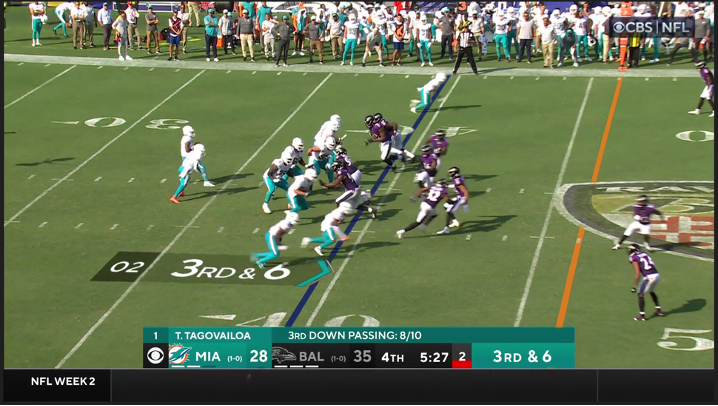
If we went the custom DVLED path, we would need to use a sub 1mm pixel pitch to see a significant increase in resolution, as well as incorporate external video processing to create the multiple windows desired. This would end up being cost prohibitive for the project. If we change to a multi-display 55” LCD option, we can create a 3-display high by 3-display wide array of 9 total displays with the entire array being 165” 5760 x 3240 resolution, and each of the nine 55” images will have a 1920 x 1080 resolution which would be ideal. Additionally, most commercial LCD displays designed for use in a video wall array application have a feature to allow you to create an image on the array of displays (or a subset of the array) that will span multiple monitors without the need for any external video processing equipment. By changing to the LCD array, we were able to provide the client with not only the ability to show nine full HD resolution images on the array, but also being able to show one large image spanning the entire array or one enlarged image spanning four of the displays on the array and individual full HD images on the remaining five displays, and for a similar price point to the 163” all-in-one DVLED display.



I wanted to highlight this use case to convey that the latest trends in technology aren’t always the best fit for a given application. While DVLED has many advantages over LCD, such as, no bezel spacing between panels, greater ability to customize the physical layout, and higher available brightness levels, the end user needs should be evaluated for each project before the technology is considered for the application. In this instance, the most important needs for the client were to have multiple high-resolution images on the display simultaneously and have the technology fit within the physical parameters of the chosen wall, so the LCD array was a better choice.
If you are considering a video wall for your next project, discuss these key factors with your design or integration partner to make sure you get the most appropriate technology for the application:
Desired content layout and usage
- Do you just want one large image from a single source, or would you like to display multiple sources/images at the same time?
- What type of content will you be showing primarily? (i.e., text/documents, video, construction plans, custom signage, etc.)
- Will the display need to be running 24/7, or does this application only require periodic use and the ability to fully power down the system is desired?
Physical constraints of the space
- Does the display need to fit within a certain area on a wall?
- Are there any room constraints that need to be overcome? (i.e., poor light control in the desired location, power restrictions at the desired location, construction limitations at the desired location, cabling limitations, etc.)
- Is the ceiling height sufficient to get the size of display needed for the application, or is a smaller primary display with additional repeater monitors within the room required to accommodate the audience?
Other considerations
- How flexible is the technology budget for the room, does the display absolutely need to fit within a certain price range, or will the budget be determined based on the most appropriate technology for the space?
- Are there any special requirements for the display? (i.e., We don’t want to see any bezel gaps on the display regardless of cost)
Transforming Your Business with AV Outsourcing. See how teaming with Exertis Almo can give your business an edge by expanding reach and establishing recurring revenue. Learn more ⟫


